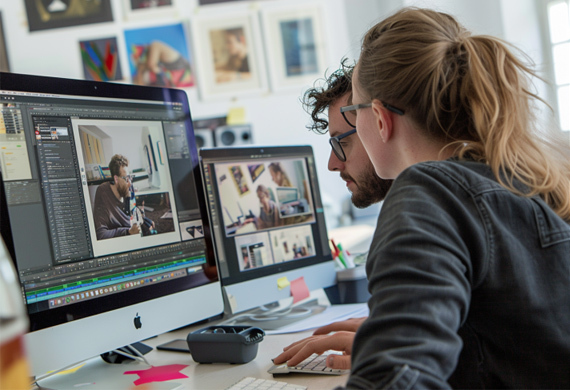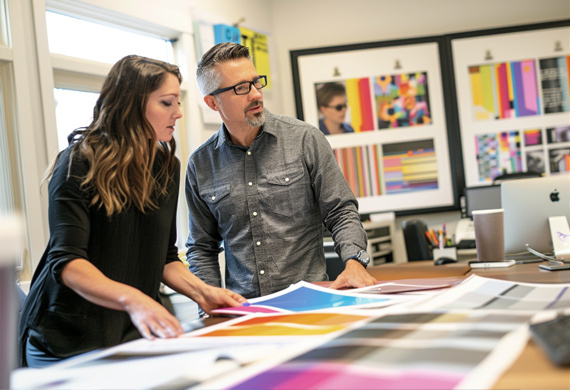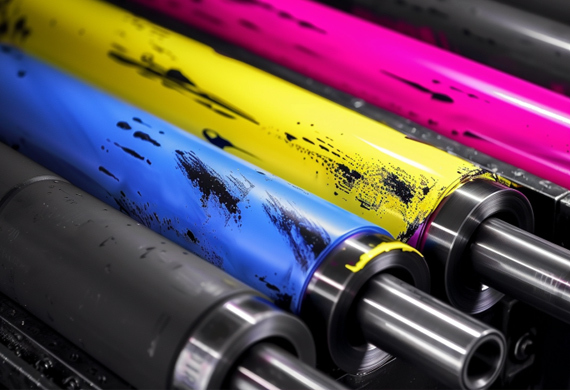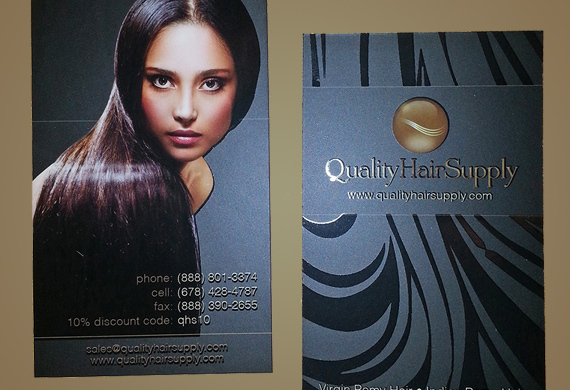What is UV printing? It's a cutting-edge digital technology that cures ink on
the spot using UV light. This process results in durable, vibrant, and precise
prints, giving it an edge over traditional printing. Learn about its workings,
advantages, and why it's reshaping the printing landscape.
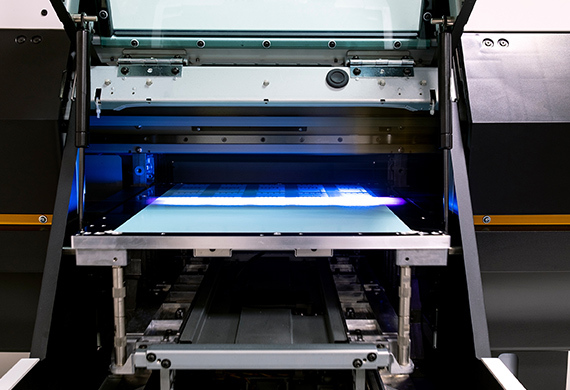
Key Takeaways
-
UV printing uses ultraviolet light to instantaneously cure ink, resulting in
prints that are highly detailed, vibrant, and durable, making it superior to
traditional printing methods in terms of speed and quality.
-
The versatility of UV printing technology enables it to print on a wide
array of materials, including paper, plastic, glass, metals, and unusual
substrates, while providing eco-friendly benefits such as almost no VOC
emissions and energy-efficient curing systems.
-
Continuous advancements in UV printer capabilities, ink formulations, and
curing systems have expanded the application of UV printing, enabling
high-quality personalization on objects and commercial/industrial use while
improving environmental sustainability.
Unveiling the Basics of UV Printing
UV printing revolutionizes the printing industry. By employing ultraviolet
light, this advanced technology facilitates the instant curing of UV inks on
the material's surface, which prevents ink from spreading and assures fine
details. The result? Prints that are rich in detail, vibrant in color, and
resistant to wear and tear.
Quite a leap from traditional printing methods to digital printing, wouldn't
you agree?
The Role of UV Light in Printing
UV light plays a pivotal role in the UV printing process. But how exactly does
it contribute to the printing process? It's simple: UV light interacts with
special photoinitiators in the UV ink, triggering a chemical reaction that
leads to the curing and hardening of the ink when exposed. This means that as
soon as the ink is printed onto the substrate, it's cured instantaneously,
ensuring sharp detail and preventing the ink from spreading.
A major advantage of UV printing is that the UV lamps used are typically:
- Energy-efficient LED lamps
- Ozone-free
- Require no warm-up time
- Cost-effective
Indeed, it's a win-win situation!
From Liquid to Solid: The Curing Process
A significant aspect of UV printing is the curing process. It involves a
photochemical reaction that instantly transforms liquid ink into a solid
state, facilitating immediate handling of the printed materials. UV curing, as
this process is known, employs high-intensity UV light to instantaneously
convert inks, coatings, or adhesives from liquid to solid state via
polymerization. The curing of UV inks involves a chemical reaction where
photoinitiators within the ink are activated by UV light to quickly harden the
ink without the need for heat or evaporation.
This instant curing of UV inks allows for immediate handling and use of the
printed material, which is a notable benefit over traditional drying methods.
In short, the UV curing process allows for a quicker turnaround in the
production of printed materials, making UV printing a swift and efficient
solution.
Comparing UV Printing to Traditional Methods
Despite the merits of traditional printing methods, UV printing offers several
distinct benefits:
-
It's exceptionally versatile and can be used for a wide variety of jobs,
including branding and creating luxurious business cards.
- It is especially effective on unusual or uncoated materials.
-
The instant curing process of UV printing ensures a crisp design without
imperfections and potential smearing or smudging, which is a common issue
with offset printing.
All these benefits make UV printing an excellent choice for projects that
require accuracy, speed, and versatility.
The Inner Workings of a UV Printer
Having touched upon the basics of UV printing, we will now investigate the
machinery that powers it—the UV printer. These advanced devices employ piezo
print head technology for precise ink placement. In fact, piezo print heads
eject ink with precision onto the print media, giving control over print
quality, color density, and finish.
But that's not all there is to it. Let's explore some of the other components
and processes that make UV printing possible.
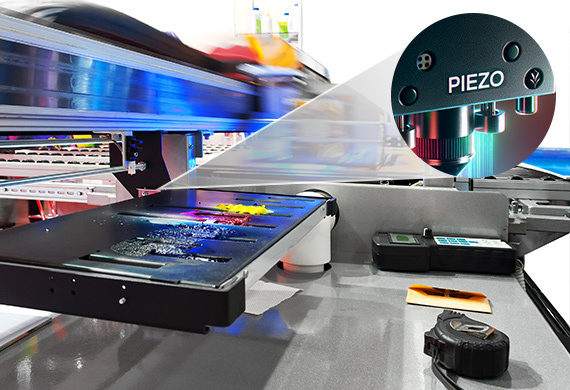
Piezo Print Head Technology Explained
Piezoelectric print heads are at the heart of UV printers, and they play a
crucial role in creating high-quality prints. These print heads utilize the
piezoelectric effect, converting mechanical stress into electric fields to
form and place ink droplets accurately. Piezo actuators within these print
heads alter their shape in response to voltage, generating the mechanical
pressure needed to eject precise volumes of ink. Electronics within the print
head strategically manage timing and voltage to piezo actuators, ensuring
precise control over ink droplet size and shape.
The ink delivery system, where the printer distributes ink, includes a
reservoir and a network of channels and nozzles that efficiently guide ink
onto the printing surface, aided by a damping system to mitigate
high-frequency energy. This precision and control over the deposition of ink
contribute significantly to the quality and sharp detail of UV prints.
Navigating the UV Printing Process
The UV printing process involves a well-coordinated series of steps, each
contributing to the quality of the final product. Some of these steps include:
-
Ensuring that the glass substrate is free of contaminants; it may undergo
flame treatment and a primer application to enhance adhesion.
-
Precise control of ink droplet size and shape, which is crucial and managed
by electronics.
- Fast curing with ultraviolet lights.
These steps help to ensure a high-quality UV printed product.
A test print should be carried out before full-scale production to verify
design accuracy and printer settings, ensuring high-quality UV printed
products. To counteract the warping and bending of materials during UV
printing, securing the substrate through clamping or a vacuum bed is applied.
From substrate preparation to final inspection, UV printing requires a keen
eye for detail and meticulous execution.
The Instant Cure Advantage
As soon as UV inks are exposed to ultraviolet lights, they dry almost
instantaneously, eliminating wait times for ink drying or curing, and
enhancing detail in the print by preventing ink spread and distortion. This
instant UV curing process reduces the overall turnaround time of printing jobs
by around 40%, significantly speeding up production cycles without
compromising print quality.
But that's not all—UV printing also provides environmental benefits, thanks to
almost no VOC emissions, making it a more eco-friendly printing solution that
contributes to waste reduction and is safe for plant operators. Furthermore,
the adoption of LED UV lamps in instant curing systems is highly
energy-efficient, cost-effective, ozone-free, and requires minimal
maintenance, which contributes to lower operational costs.
In a nutshell, the instant cure advantage of UV printing offers a trifecta of
benefits: speed, eco-friendliness, and cost-effectiveness.
The Versatility of UV Printing on Various Materials
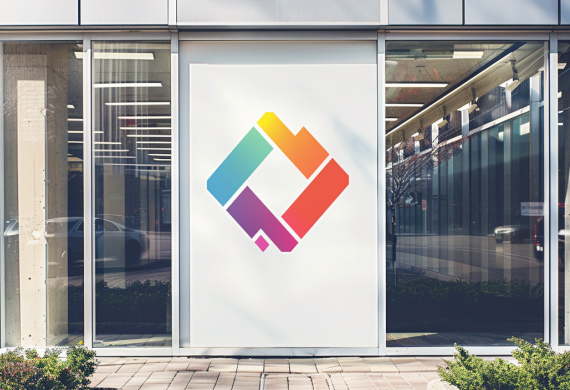
The versatility of UV printing is truly magical. This technology isn't just
for paper—it can handle a wide variety of materials, including:
- traditional substrates like paper
- non-traditional ones such as foam board, aluminum, and acrylic
- coated and uncoated materials
-
advanced materials like silk, embossed linen effect paper, and thick
triple-layered card
The unique property of UV ink to sit on top of the substrate without
penetrating it, combined with instant curing, allows for printing on a wide
range of surfaces. UV LED machines showcase the technology's breadth.
Plus, the versatility of UV printing supports environmentally friendly
practices by allowing the use of recycled paper or biodegradable materials for
signage, emphasizing sustainability. Let's delve deeper into how UV printing
makes its mark on various materials.
Beyond Paper: Printing on Nonporous Surfaces
Unlike traditional printing methods, UV printing isn't confined to porous
surfaces like paper—it can print on a variety of nonporous materials,
including plastic, glass, and metals. When UV printing on nonporous metal
surfaces, it's crucial to use high-quality printers and inks to achieve
durable and full-color prints. Even glass, with its smoothness and
nonporosity, can be successfully printed on with the appropriate techniques
and equipment.
LED UV curing technology is particularly advantageous for printing on
nonporous and heat-sensitive substrates like plastics, as it operates at lower
temperatures to avoid material distortion. What's more, UV LED curing ensures
that ink remains on the surface of printing materials without being absorbed,
resulting in sharper colors and more defined images. Applying specialized
surface finishes to UV printed metal parts can provide protection, chemical
resistance, and enhance the appearance with a shiny finish.
So, whether it's a glossy brochure or a metal sign, UV printing can handle it
all.
Embracing Diversity: Wood, Leather, and More
UV printing doesn't just work on nonporous surfaces—it also accommodates a
wide variety of materials. From wood to leather, UV printing allows for the
creation of vibrant, intricate designs that maintain high detail and color
accuracy. However, these materials may require special pre-treatment to
enhance ink adhesion and ensure the durability of the print. The type of UV
ink used for printing on wood and leather surfaces depends on the specific
nature of the material—whether it's hard, soft, or requires flexibility.
Even a range of leather and synthetic alternatives like PU leather,
leatherette, and Piñatex are compatible with UV printing, offering diverse
options for printing detailed graphics on different leather goods. To achieve
high-quality prints on darker leather materials, UV printing employs white ink
technology to lay down a solid basecoat, optimizing color vibrancy and detail
fidelity.
The versatility of UV printing opens up a world of possibilities for printing
on diverse materials.
The Advantages of Choosing UV Printing
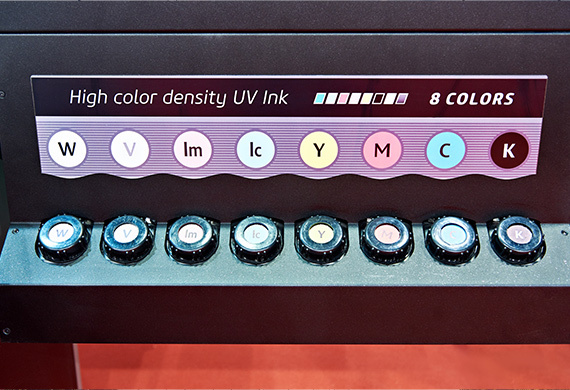
UV printing offers numerous benefits, making it an outstanding choice for
various situations. Some of the benefits of UV printing include:
-
Enhanced durability: The cured ink is resistant to scuffs, marks, fading,
and moisture, making printed items last longer without the need for
lamination.
-
Cost savings: The energy-efficient UV LED technology used for instant curing
contributes to cost savings and requires minimal maintenance.
-
Versatility: UV printing can be easily integrated into various production
lines and provides customization options to meet diverse customer needs.
These advantages make UV printing a popular choice in the printing industry.
Overall, UV printing stands out for its advantages, and one of the most
notable benefits is the use of UV print technology, which results in low
emissions of volatile organic compounds (VOCs), making it a more
environmentally friendly option. Let's delve deeper into these advantages.
Eco-Friendly Printing Solutions
Given the growing focus on sustainability, the environmentally friendly
feature of UV printing is a substantial advantage. UV inks solidify instantly
under UV light without releasing volatile organic compounds (VOCs), in
contrast to traditional inks that emit harmful solvents during drying. Even
better, there are UV inks available that have low VOC content and UV-printing
processes that have been certified by standards like GREENGUARD GOLD, ensuring
lower emissions and suitability for use in sensitive environments.
The shift from traditional mercury lamps to LED UV curing systems has
increased energy efficiency, further reducing the environmental footprint by
minimizing CO2 emissions and hazardous waste. This makes UV printing not just
a superior choice for quality, but also a responsible choice for the
environment.
Achieving High-Quality and Vibrant Prints
In terms of quality, UV printing is unrivaled. UV inks contain up to twice as
much pigment as conventional inks, which enables richer color density and
vibrant print outputs without the colors sinking into materials. UV inks are
noted for their enhanced durability and fade resistance compared to
conventional offset inks, making them ideal for outdoor applications and
products subjected to sunlight.
Recent advancements in UV inks, such as wider color gamuts and the
introduction of additional colors like red and orange, have been central to
achieving more vibrant and high-quality prints. UV printer manufacturers
continue to enhance the image quality, color, and production capabilities of
their devices, contributing to the overall improved performance of UV printing
technology. Whether it's a luxury brochure or a vibrant poster, UV printing
ensures that the final product conveys a premium sense of quality through its
visual presentation.
Speed and Efficiency in Production
UV printing is not only about quality but also about speed and efficiency. UV
printing technology has seen recent advancements, including:
- Faster printing speeds which streamline the production process
-
The incorporation of UV-LED curing technology in UV printers allows prints
to be dried and ready immediately, facilitating quicker job turnover and
increased project capacity
-
Faster drying times with UV printing make it cost-effective by removing the
need for additional aqueous coatings to protect the print.
Compared to traditional printing processes, UV printing offers several
advantages:
- More production flexibility
- Reduced overhead costs
- Speedy and efficient
- Cost-effective solution for a wide range of applications
Innovative Applications of UV Printing Technology
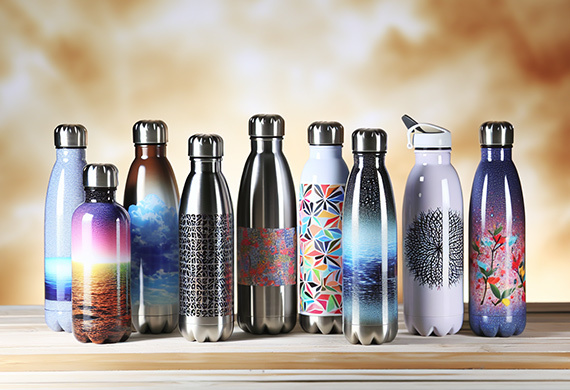
The versatility and quality of UV printing have paved the way for its usage in
a broad range of innovative applications. From personalizing everyday objects
to commercial and industrial uses, UV printing has proven to be a versatile
and effective solution. It allows for detailed customization of small consumer
items like phone cases, with intricate designs and a full spectrum of colors.
Artists and designers have adopted UV printing to create bespoke artworks and
unique crafts that showcase high-resolution graphics and textures.
Personalized gifts, such as photo-printed accessories and monogrammed items,
take on a new level of quality and durability with UV printing.
Commercial industries use UV printing for a variety of purposes, including:
-
Creating eye-catching product packaging that resists fading and can
incorporate special effects such as embossing and gloss finishes
-
Producing long-lasting labels and functional components that must withstand
harsh environments
-
Decorative purposes, including interior design elements and custom furniture
printing
Let's take a closer look at some of these innovative applications.
Personalizing Everyday Objects
Picture your favorite quote, a beloved photograph, or a unique design on your
phone case or water bottle. UV printing can turn this vision into reality. UV
printing technology allows for the customization of:
- Water bottles with full color, gradients, and even textures
-
Personalized water bottles that feature designs utilizing variable data such
as names or numbers
-
Water bottles that achieve seamless full wraps with special effects like
spot varnish or texture
- Clear bottles that have mirror printing for double-sided visibility
With UV printing, the possibilities for personalized and unique water bottles
are endless.
UV LED printers are capable of customizing phone cases with a variety of
designs using materials like Poly Carbonate, ABS, Leather, and Silicon. Even
glass objects such as wine bottles can be enhanced with UV printing, with
accessories like a rotary jig ensuring stability and precision during the
printing process. From phone cases to wine bottles, UV printing can
personalize everyday objects in unique and vibrant ways.
Commercial and Industrial Uses
UV printing has found widespread applications in the commercial and industrial
sectors. This technology is utilized for creating a variety of signage and
advertising materials including flyers, leaflets, and signs, demonstrating its
adaptability across different media. For industrial and commercial branding,
UV printing on metal is employed to produce items like warning signs, barcoded
machine parts, serialized items, and labels for metallic packaging,
emphasizing its utility in durable and permanent marking.
Professionals also prefer UV printing to create traditional graphics such as
signage and posters, as well as vibrant in-store displays and point-of-sale
products designed to attract consumer attention. Even the packaging industry
has benefited from the progress in UV printing, with new ink formulations
enhancing printing on flexible packaging films and an increased number of
heat-sensitive substrates. It's clear that UV printing has a significant role
to play in commercial and industrial applications.
UV Printing: A Tool for Creatives and Entrepreneurs
For creative professionals and entrepreneurs, UV printing presents a world of
opportunities. This technology opens up new possibilities for creatives to
print with a vast array of vibrant colors and textures on various materials.
The ability to print on three-dimensional objects expands the scope for
designers to innovate with custom decor, signage, and unique product
enhancements. Creative professionals can leverage UV printing to produce
highly customized and limited-edition art pieces, leveraging its ability to
print on differing shapes and materials.
On the other hand, entrepreneurs have the opportunity to start new ventures or
expand existing ones by adopting UV printing due to its versatility and the
added value it brings to printed products. UV printing technology can give
businesses a competitive edge with the capability to offer rapid prototyping
and bespoke manufacturing services. It's become increasingly popular in
various industries, including promotional goods, packaging, and interior
design, due to its durability and high print quality. Physical retail
businesses can utilize UV printing to create eye-catching in-store displays
that enhance the customer experience and drive sales.
Let's delve deeper into how creatives and entrepreneurs can utilize UV
printing.
Crafting Unique Products
UV printing allows for:
- Quick adaptation to consumer trends
- Catering to individual preferences
- Creation of custom items for events and special occasions
-
Compatibility with a wide range of substrates, including both rigid and
flexible materials
This enables artists to craft highly individualized and unique product
offerings to meet diverse customer requests.
Artists and designers can cater to the interior design market with custom
products such as ceramic tiles and tabletops, as well as personalized gifts
like high-definition photographs and graphics on acrylic blocks, canvases, or
keyrings. UV printing expands business opportunities for artists by enabling
them to diversify their product range with promotional items like golf balls,
tumblers, and coasters and engage in the packaging market through unique and
eye-catching designs.
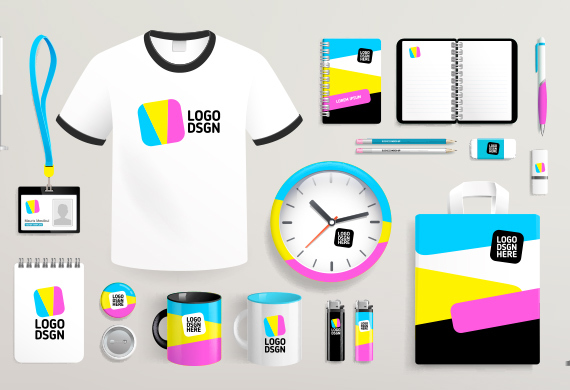
Creating unique products allows artists to make a lasting impression on their
clients and distinguish themselves from competitors.
Business Opportunities with UV Printing
UV printing offers a plethora of business opportunities for entrepreneurs.
This technology creates new revenue opportunities in the B2C sector through
the online sale of personalized products, catering to customers' preferences
for unique items. Entrepreneurs can leverage UV printing to meet B2B demand
for branded promotional items like pens and USB drives, which require
high-quality prints and accurate color representation for brand consistency.
UV printing's capacity for small-scale production allows businesses to
manufacture custom packaging and limited edition products efficiently, adding
value and increasing profit margins.
By targeting niche markets with UV printing, entrepreneurs can develop
specialized offerings for the travel and tourism sector, holiday-decorated
items, and personalized healthcare products, each providing avenues for
distinct and memorable branding. In this way, UV printing can help
entrepreneurs reach new markets, satisfy customer demands, and grow their
businesses.
The Evolution of UV Printing Technologies
Since its initial application in curing gel nail polishes, UV printing
technology has evolved significantly. Today, it's found diverse applications
in commercial and industrial printing, thanks to significant advancements in
ink formulations and printer capabilities.
For example, the Epson SureColor V7000, a new UV printer model, features a
10-color ink system including:
- red ink
- gray
- opaque white
- varnish
This substantially expands the color gamut and enhances the print quality.
This evolution in UV printing technologies has not only improved the quality
of prints but also expanded the range of possible applications.
Next-Gen Flatbed UV Printers
The emergence of next-generation flatbed UV printers, including the UV inkjet
printer, has further expanded the possibilities of UV printing. The Epson
SureColor V7000 introduces an entry-level UV flatbed printer with a 10-color
ink technology, while the IU-1000F UV-LED High-Productivity Flatbed Printer
offers direct printing onto 4' x 8' media boards. These new models, like the
Epson SureColor V7000 with its expanded color gamut and Roland's TrueVIS LG
Series with two new staggered printheads, offer enhanced print quality and
superior color definition.
Specialized UV printers like the Mutoh XpertJet 661UF allow for rotary
printing on cylindrical objects, while the VersaUV and VersaOBJECT series
cater to a wide variety of substrates and print sizes. As you can see, the
advancements in flatbed UV printers have significantly broadened the scope and
potential of UV printing.
Breakthroughs in UV Inks and Curing Systems
In addition to advancements in printer technology, significant progress has
been made in UV inks and curing systems. LED UV printing technology is more
environmentally friendly than traditional methods, utilizing significantly
less power and eliminating the need for heat in the drying process, thus
reducing its carbon footprint. UVLED curing enhances the process by
implementing Pulse-Width Modulation (PWM) technology, allowing curing power to
be adjusted to different speeds, minimizing potential damage to substrates.
Some benefits of LED UV printing technology include:
- Reduced energy consumption
- Faster drying times
- Improved print quality
- Increased durability
- Compatibility with a wide range of substrates
These advancements in UV inks and cure ink systems have revolutionized the
printing industry, including inkjet printers, providing more efficient and
sustainable printing solutions.
Recent breakthroughs in UV ink technology have introduced expanded color
gamuts and the development of semi-flexible inks, which provide superior print
quality and more dynamic color ranges. These innovations have not only
improved the performance of UV printing but also its sustainability and
versatility.
UV Print Summary
As we've explored, UV printing is a revolutionary technology that offers
numerous advantages over traditional printing methods. From its ability to
print vibrant, high-quality images on a variety of materials to its
environmental benefits and cost-efficiency, UV printing is truly a
game-changer. Whether you're an artist seeking to create unique masterpieces,
a business looking to offer personalized products, or an industry professional
in need of durable and vibrant prints, UV printing has something to offer. As
UV printing technology continues to evolve and innovate, we can only expect it
to open up even more exciting possibilities. So, are you ready to embrace the
future of printing with UV technology?
Frequently Asked Questions
These are the most common questions about UV printing:
What does UV printing do?
UV printing, also known as Ultra Violet Printing, uses UV curing ink to print
on a wide range of materials or substrates. It offers versatility in printing
options.
What is the difference between UV printing and normal printing?
The main difference between UV printing and normal printing is that UV inks
dry through a photo mechanical process with the use of Ultraviolet light,
rather than being absorbed like conventional ink. This results in instant
drying of the ink as it is printed.
How long does UV printing last?
UV printing can last at least two years without fading, and with lamination,
it can last even longer.
Is UV printing the same as sublimation?
No, UV printing is not the same as sublimation. UV printing is a single-step
process where the ink dries instantly with built-in UV light, while
sublimation is a two-step process that requires external heat for drying,
making it relatively time-consuming.
How does UV light contribute to the printing process?
UV light contributes to the printing process by triggering a chemical reaction
in UV ink, leading to its curing and hardening, which ensures sharp detail and
prevents ink from spreading. This enhances the printing quality and accuracy.
Clash Graphics Print Shop Atlanta Flyer Printing
2233 Peachtree Rd NE Ste 202 Atlanta, GA 30309
(678) 235-3464
To view the original version on Clash Graphics, visit: https://www.clashgraphics.com/printing-tips/what-is-uv-printing/
